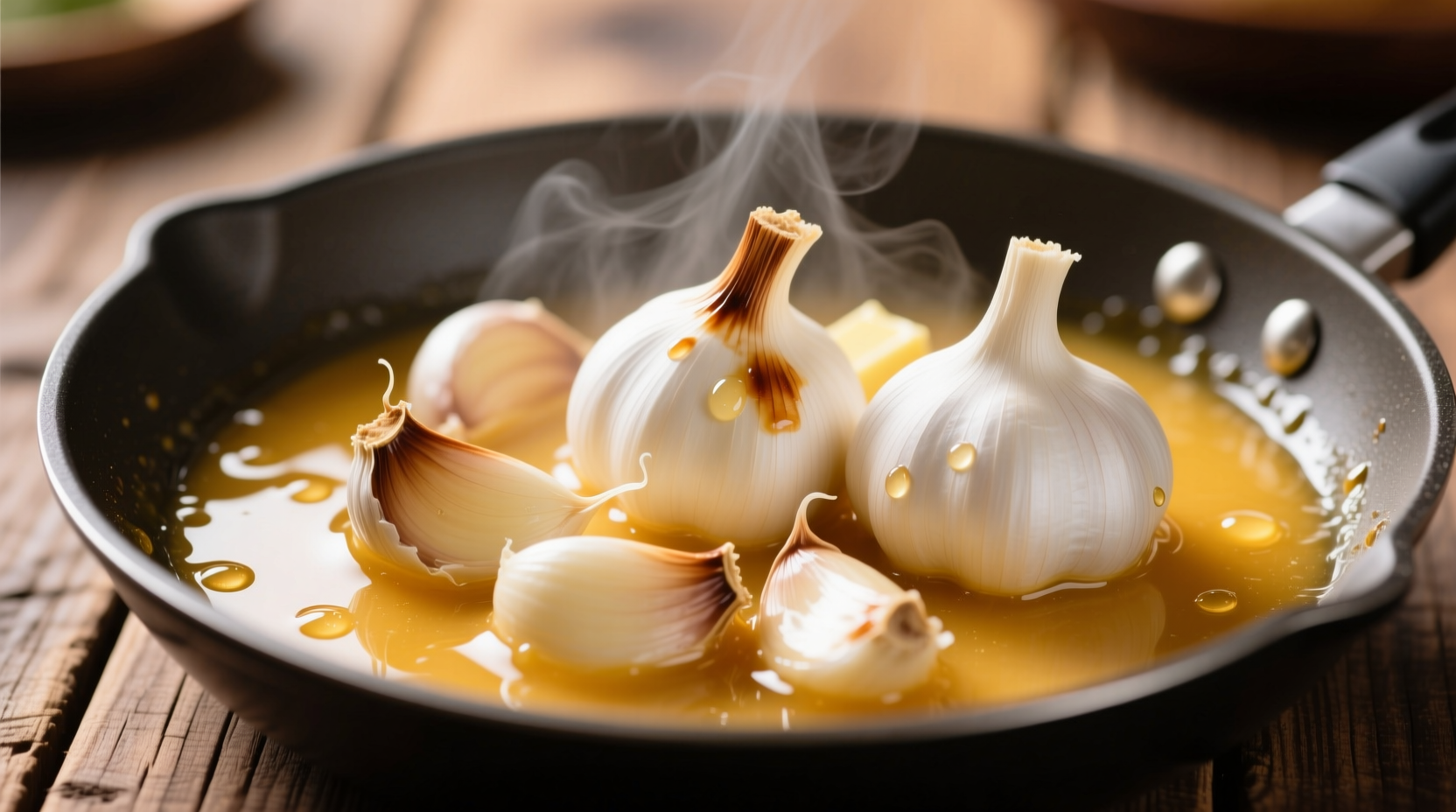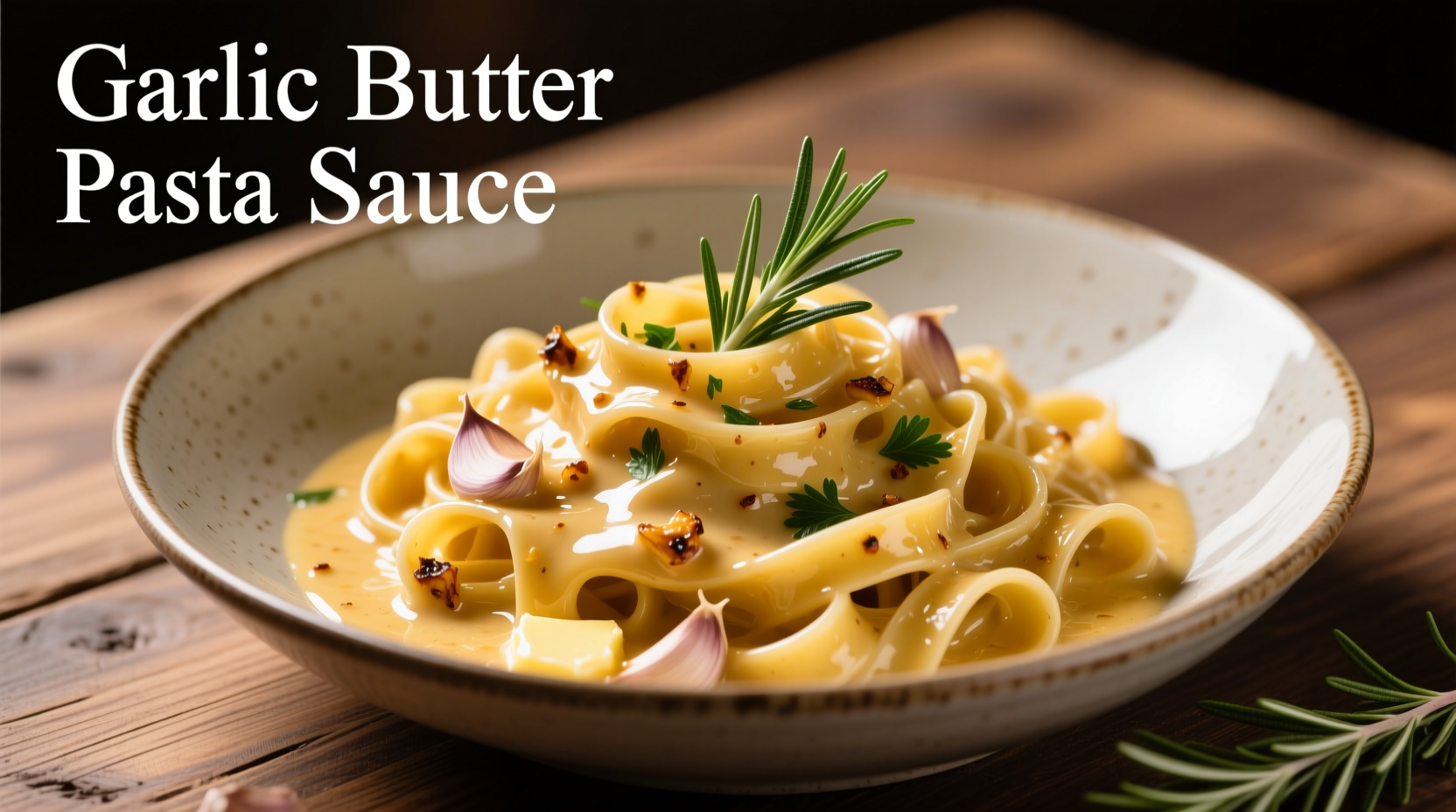Garlic butter pasta sauce represents one of the most elegant culinary simplifications in Italian cooking tradition. When crafted properly, this minimalist sauce transforms humble ingredients into something extraordinary through careful attention to technique and timing. Unlike heavy cream-based alternatives, the pure garlic butter version showcases the natural synergy between fresh garlic, quality butter, and perfectly cooked pasta.
The Science Behind Perfect Garlic Butter Sauce
Understanding the chemistry of your ingredients elevates this simple sauce from good to exceptional. Garlic contains allicin, the compound responsible for its distinctive flavor, which develops when raw garlic is cut or crushed. Butter's milk solids caramelize at 250°F (121°C), creating nutty noisette flavors that form the foundation of your sauce. The key is controlling these reactions to avoid bitterness while maximizing flavor development.
| Garlic Preparation Method | Flavor Profile | Best For |
|---|---|---|
| Raw, minced | Sharp, pungent | Finishing touch only |
| Gentle sauté (2-3 min) | Sweet, mellow | Classic sauce base |
| Deep golden (4+ min) | Nutty, complex | Gourmet variations |
Essential Ingredients Checklist
Quality matters significantly in minimalist recipes. For authentic garlic butter pasta sauce:
- Garlic: Use fresh heads with tight cloves (avoid sprouting or soft spots). Six medium cloves typically yields perfect flavor balance for 1 pound of pasta.
- Butter: European-style unsalted butter (82% fat content) provides superior flavor and texture. Land O'Lakes or Kerrygold work well for American cooks.
- Pasta water: Reserve 1½ cups before draining - this starchy liquid is crucial for emulsification.
- Finishing elements: Fresh parsley, lemon zest, and high-quality Parmesan transform basic sauce into something special.

Step-by-Step Preparation Guide
Follow this professional technique for flawless results every time:
- Prep garlic properly: Slice cloves thinly rather than mincing to control flavor release. This prevents bitter compounds from overwhelming the sauce.
- Control heat precisely: Warm olive oil in your skillet over medium-low heat before adding garlic. Cook 2-3 minutes until fragrant but not browned - garlic burns easily.
- Add butter gradually: Incorporate cold butter one tablespoon at a time, swirling constantly. This emulsification technique creates a silky texture without breaking.
- Combine with pasta: Transfer cooked pasta directly to sauce with ½ cup reserved pasta water. Toss vigorously for 60-90 seconds until sauce coats each strand.
- Finish with finesse: Remove from heat before adding Parmesan, lemon zest, and parsley to preserve fresh flavors.
When This Sauce Works Best (And When It Doesn't)
Understanding context boundaries prevents culinary disappointment. Garlic butter pasta sauce excels with:
- Long, thin pasta shapes like spaghetti, linguine, or fettuccine
- Simple preparations where ingredient quality shines
- Quick weeknight meals requiring minimal ingredients
It's less suitable for:
- Pairing with strongly flavored proteins like anchovies or cured meats
- Situations requiring make-ahead convenience (best served immediately)
- Cold pasta salads where emulsion would break
Popular Variations Worth Trying
Once you've mastered the classic version, these professional variations add exciting dimensions:
- Spicy arrabbiata style: Add ½ teaspoon red pepper flakes with the garlic for gentle heat
- Lemon-herb version: Double the lemon zest and add 2 tablespoons fresh basil at the finish
- Seafood enhancement: Toss with sautéed shrimp during the final minute of cooking
- Creamy adaptation: Stir in ¼ cup heavy cream after emulsifying the butter for richer texture
Troubleshooting Common Issues
Even experienced cooks encounter these challenges with garlic butter pasta sauce:
- Sauce breaks: Caused by excessive heat or adding butter too quickly. Fix by removing from heat, adding 2 tablespoons cold pasta water, and whisking vigorously.
- Garlic burns: Start with lower heat next time. Burnt garlic cannot be salvaged - begin again.
- Too oily: Indicates improper emulsification. Return to low heat and whisk in additional pasta water, one tablespoon at a time.
- Lacks depth: Add a Parmesan rind to the pasta water while cooking for subtle umami enhancement.
Storage and Reheating Guidelines
While best served fresh, leftovers can be stored properly following USDA food safety guidelines. According to the Food Safety and Inspection Service, butter-based sauces should be refrigerated within 2 hours of preparation (USDA FSIS).
Store in an airtight container for up to 3 days. Reheat gently over low heat with a splash of water or milk to restore emulsion. Freezing is not recommended as dairy separates upon thawing.
Why This Recipe Stands Out
Most garlic butter pasta sauce recipes fail by either overwhelming with garlic or creating an oily separation. This method succeeds by respecting the delicate balance between ingredient chemistry and cooking technique. Professional chefs consistently achieve better results by controlling garlic's enzymatic reactions and butter's emulsification properties - knowledge now accessible to home cooks through this refined approach.











 浙公网安备
33010002000092号
浙公网安备
33010002000092号 浙B2-20120091-4
浙B2-20120091-4